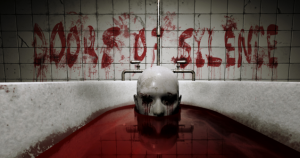Georgetown Planning and Facilities Management conducted indoor air quality assessments during the final week of classes in Village C East and West and Darnall Hall from Dec. 4 to Dec. 10. Residents of the three dorms were notified that facilities personnel would be entering their rooms by an email from Planning and Facilities management
This November was the rainiest in D.C. history according to the National Weather Service, and 2018 is now the rainiest year on record for the area. This has intensified conditions beneficial to mold growth. The increase in mold caused an increase in facilities requests centered on mold assessment, and spurred the decision to make building-wide inspections.
“Unprecedented rainfall and high humidity have engulfed the entire Mid-Atlantic region this fall, resulting in a higher volume of requests for assessment related to mold,” Benjamin Kuo, vice president for planning & facilities management, wrote in a statement to the Voice. “The offices of Planning & Facilities Management and Residential Living have remained in close contact throughout the semester to ensure prompt inspection and remediation efforts.”
This problem has been very real for Arshan Goudarzi (COL ’22), who lives in Village C West. “Personally, my roommate and I have been waking up congested and sick for a month now,” Goudarzi said. “There wasn’t too much visible mold, but because of rainfall and how stuffy this building is, there is so much room for mold to grow.”
Inspection teams led by facilities staff began the evaluation with visual assessments of each student room, hallway and common room. Facilities anticipated that most rooms would be reviewed a single time, while others required re-assessment and a potential full inspection. That involved, “analytical equipment to evaluate air quality by taking air samples for further lab analysis,” according to the email.
Connor Brennan (SFS ’22) was present in his room during the inspection and was grateful for the work. “I was very surprised at what they had found. Up in the top right corner of my room, I thought there was just a large patch of chipped paint—nope! That was straight black mold,” Brennan wrote in an email to the Voice. “Within a day, they sent down facilities and they eliminated our mold problem.”
The equipment used during the inspections checked not only for mold but also other potential issues in temperature, humidity, carbon dioxide, and carbon monoxide levels. If any areas needed to be cleaned, the inspectors called for facilities workers to come in. However, it remains to be seen if these are short term fixes or ones that will prevent future mold outbreaks.
“It’s not going to stop it,” Goudarzi said. “The problem with the mold is much more than just being there. They need to stop it from growing.”
Even if these repairs do not fix all mold problems, Brennan is glad action is being taken. “I know a lot of students complain about how long facilities can take and, from my work in GUSA trying to improve them, I share the frustration,” Brennan wrote. “However, the room inspections seem to show a good shift towards the effectiveness of the facilities staff.”






[…] Source link […]